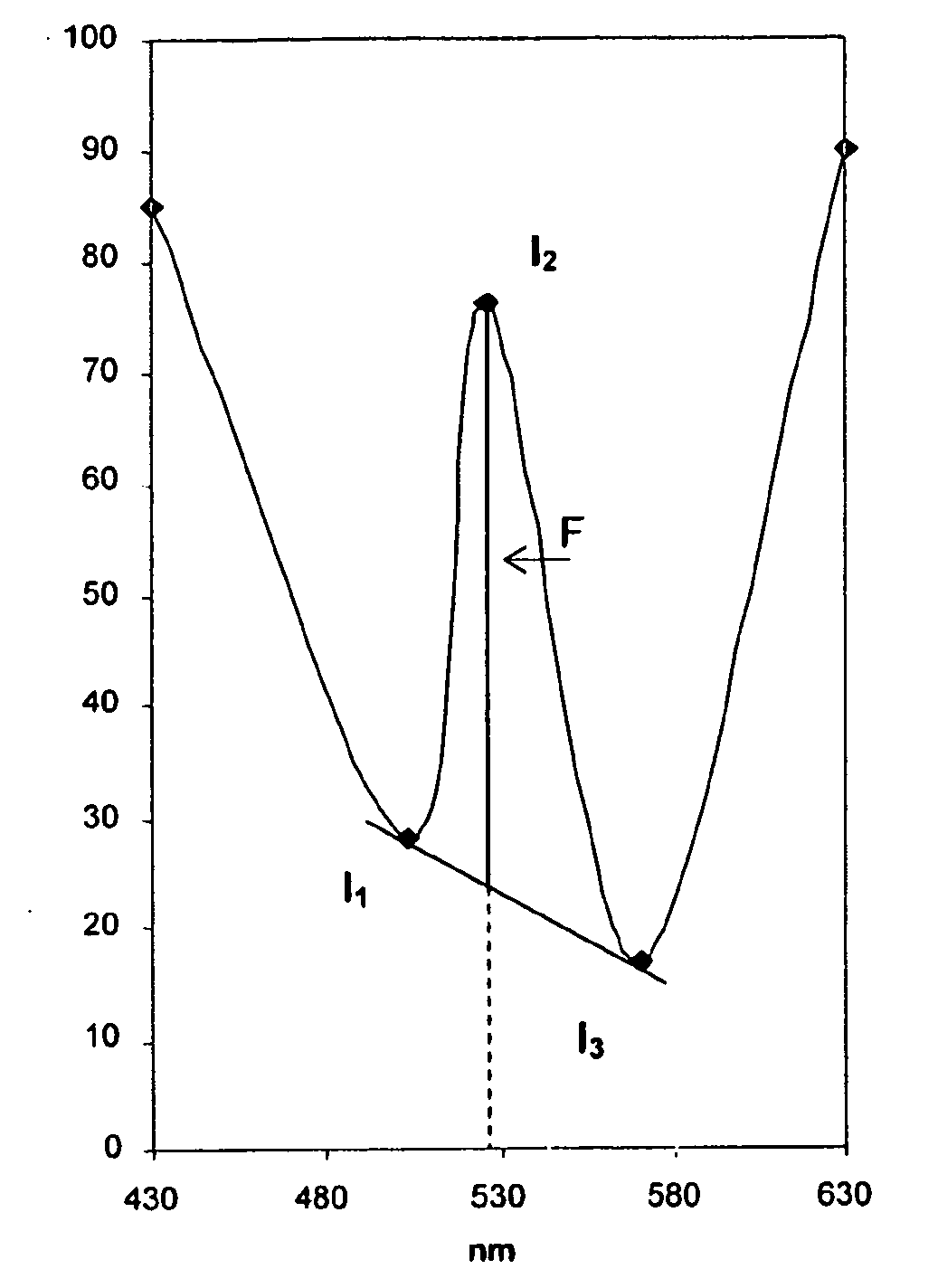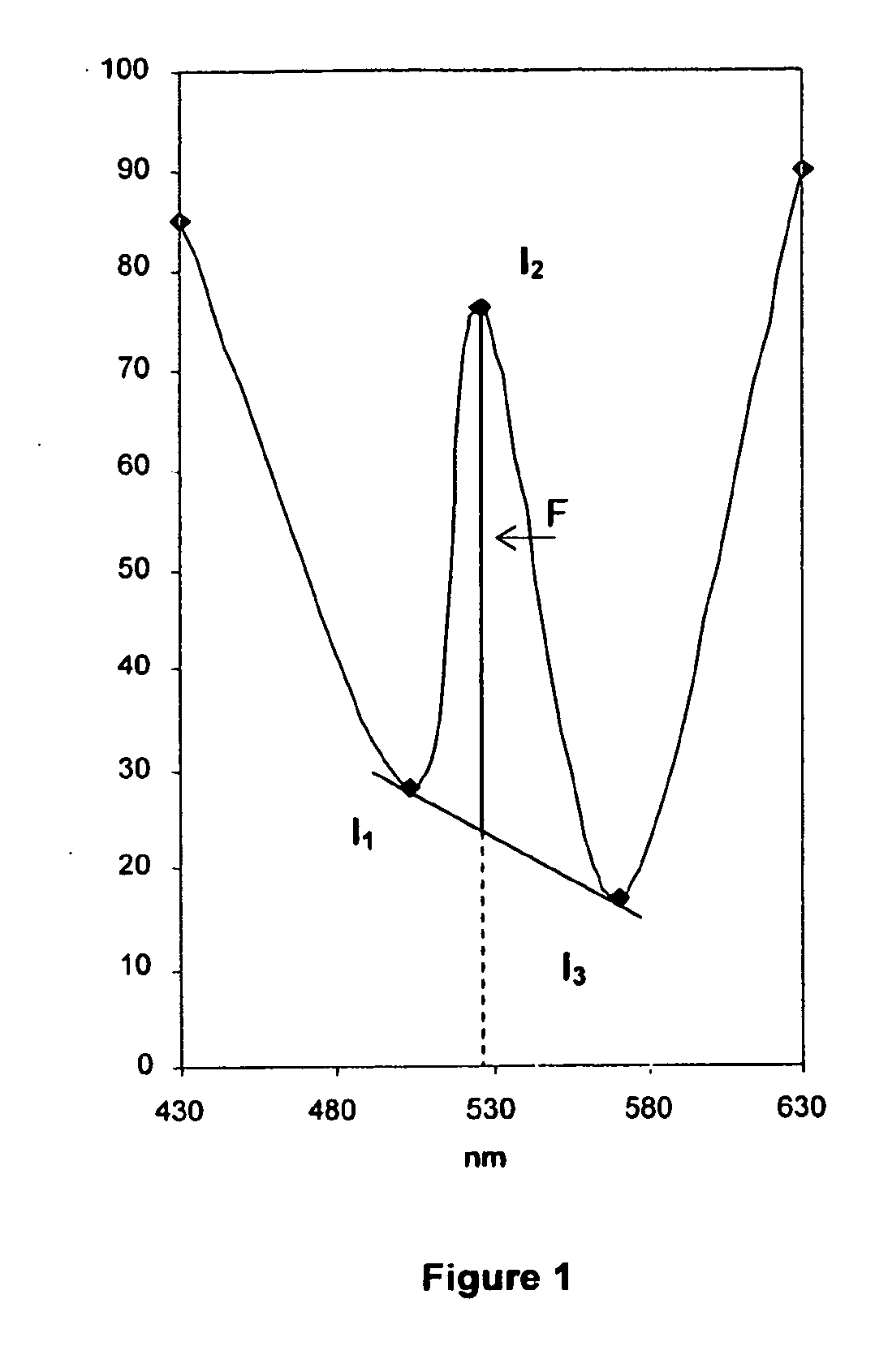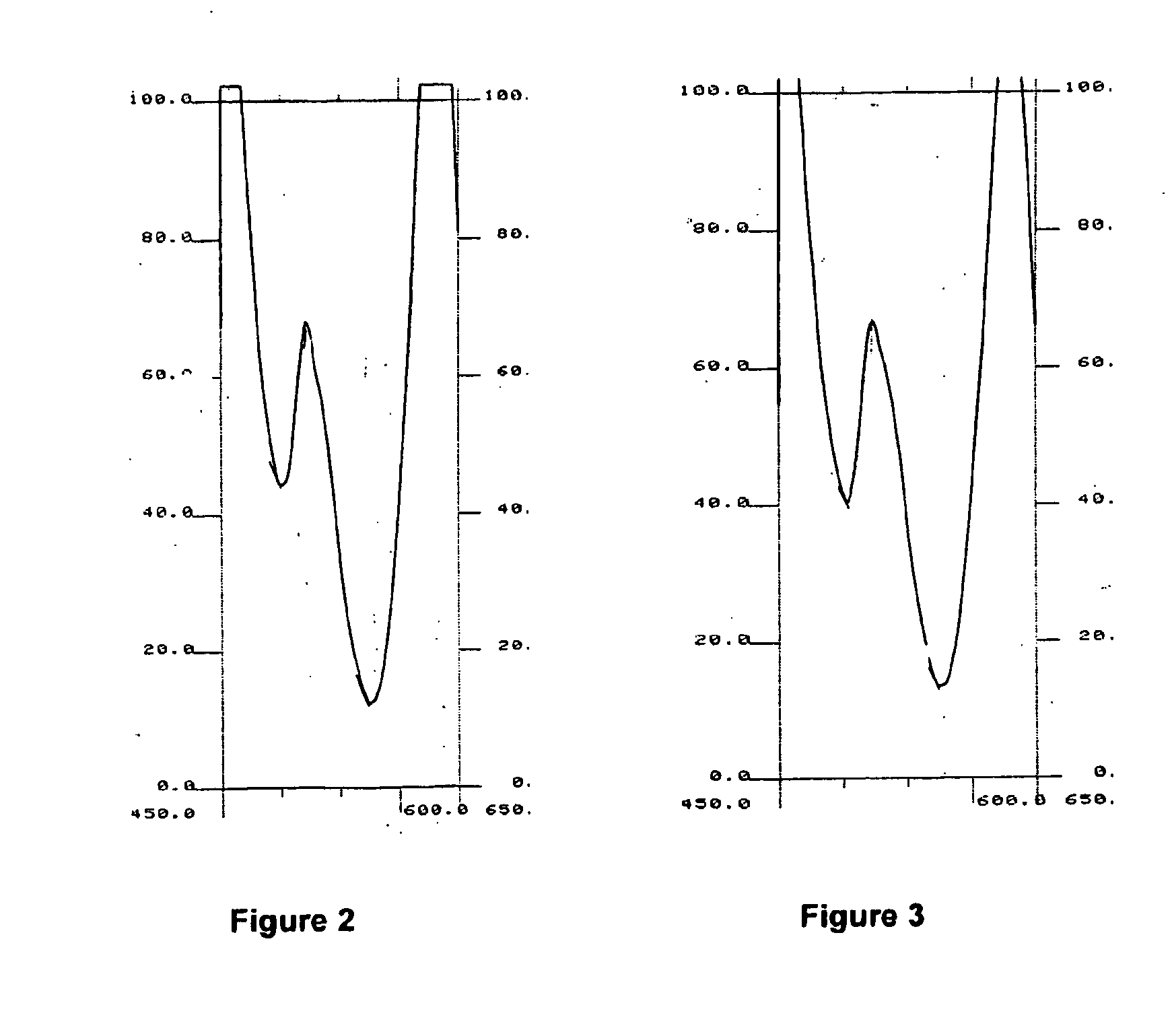Method for assaying nucleic acids by fluorescence
a nucleic acid and fluorescence technology, applied in the field of fluorescence assaying nucleic acids, can solve the problems of difficult comparison of methodologies, insensitiveness, and inability to allow the amount of circulating dna in patients to be measured
- Summary
- Abstract
- Description
- Claims
- Application Information
AI Technical Summary
Benefits of technology
Problems solved by technology
Method used
Image
Examples
example
Equipment
[0174]Plasmas or serums collected in herparinised EDTA tubes from centrifuged whole blood, then decanted; TBE 1× buffers (pH 8.5) (Tris 90 mM, boric acid 90 nM, EDTA 2 mM); polyethylene haemolysis tubes, acrylic vessels; synchronous fluorimeter (Shimadzu RF 535 reader, DR-3 data analyser); Picogreen® (dsDNA quantitation kit, Molecular Probes); standard DNA of known concentration for the standard range.
Method
A—Principle of Synchronous Fluorimetry
[0175]a) Difficulties Associated with Conventional Fluorimetry
[0176]The main difficulty often associated with conventional fluorimetric detection is related to the Rayleigh scattering resulting from the proximity of the excitation and emission wavelength. This effect can be particularly intensive in the case of analysis of complex and proteinated media such as blood serum.
[0177]When determining a conventional fluorescence spectrum, one of the monochromators will sweep the spectrum while the second remains fixed. In order to produce a...
PUM
| Property | Measurement | Unit |
|---|---|---|
| fluorescence intensities | aaaaa | aaaaa |
| emission wavelengths | aaaaa | aaaaa |
| excitation wavelengths | aaaaa | aaaaa |
Abstract
Description
Claims
Application Information
 Login to View More
Login to View More - R&D
- Intellectual Property
- Life Sciences
- Materials
- Tech Scout
- Unparalleled Data Quality
- Higher Quality Content
- 60% Fewer Hallucinations
Browse by: Latest US Patents, China's latest patents, Technical Efficacy Thesaurus, Application Domain, Technology Topic, Popular Technical Reports.
© 2025 PatSnap. All rights reserved.Legal|Privacy policy|Modern Slavery Act Transparency Statement|Sitemap|About US| Contact US: help@patsnap.com



